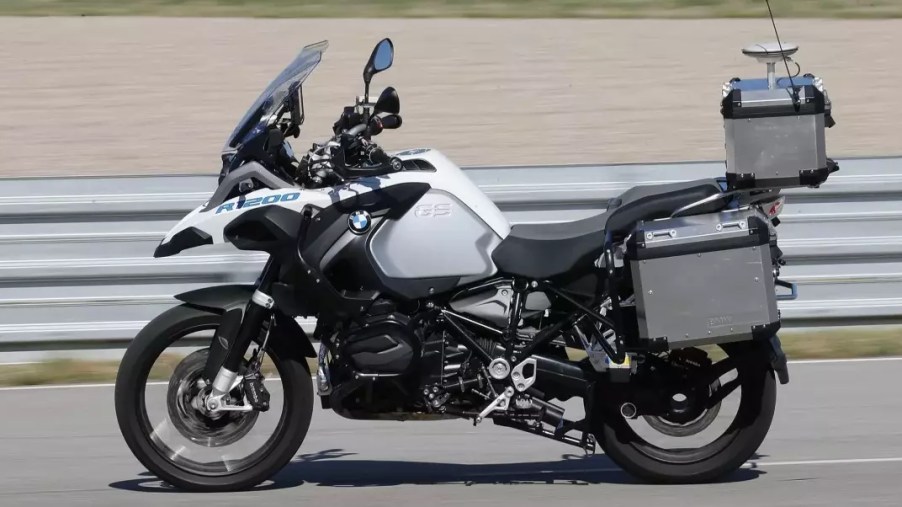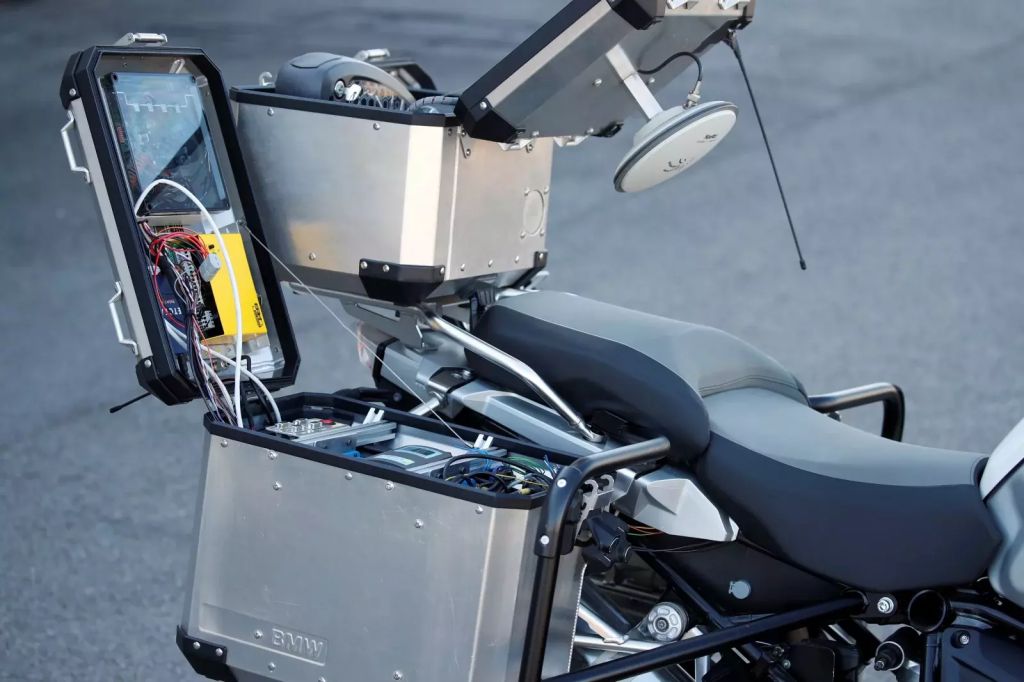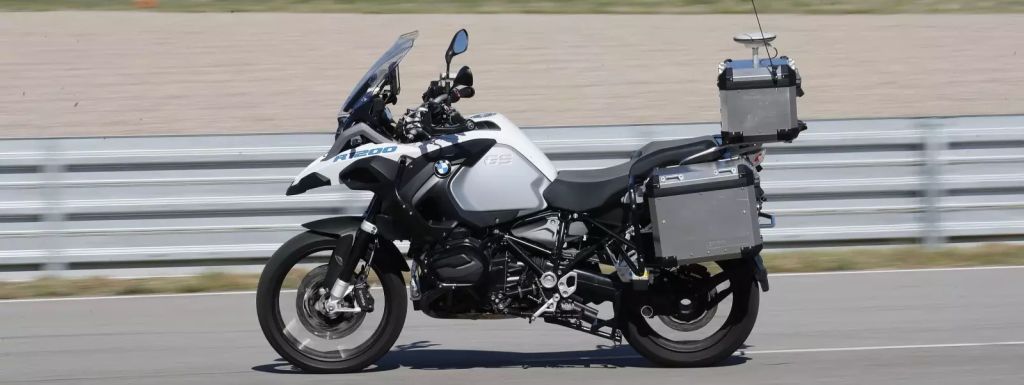
Forget Self-Driving Cars, and Check out This BMW Self-Riding Motorcycle
Self-driving vehicles are breaking ground in various different states, such as the Nuro R2 in California, Arizona and Texas. And most driverless cars are serving as glorified taxi cabs. But back in 2018, BMW developed a self-driving motorcycle, one that could operate without a rider. But why did they create such an advanced motorbike?
BMW’s self driving motorcycle can ride itself
No operator is necessary for this highly modified BMW R1200 to scoot around a track, even with three fully-loaded “cargo containers.” The bike is capable of accelerating, leaning into turns, and even coming to a full stop. And while it’s not a speed demon, this self-balancing bike is utterly fascinating to watch.
The astute reader, however, will notice that I put cargo containers in quotations. Inside each one of those is the advanced technology that keeps the motorcycle on its own two wheels. BMW stuffed the bike with computers, sensors, and even a GPS to control the throttle, brakes, clutch, and steering mechanisms.
But it’s been three years since this concept bike rode around the track, and clearly, the bike hasn’t been put into production. So why would BMW have built the bike in the first place?
Why did BMW engineer a self-riding motorbike?

For context, the bike was debuted at the BMW Motorrad Techday, where journalists gawked at impressive technologies. In other words, this bike was a display of BMW’s best motorcycle technology. But that doesn’t mean the bike was built solely to impress the press.
BMW planned to implement bits and pieces of the motorcycle’s technology to make their bikes safer. After all, the moment you step on a motorcycle, your chances of death are 28 times higher according to the NHTSA. If the bike can help riders keep their composure, the chances of fatal crashes will lower. Not only that, but with advanced technology, new riders may feel more comfortable hopping on a motorbike.
And that’s the main reason these technologies are being developed, as a new generation of riders is taking the handlebars. And in order to keep riding alive, motorcycle manufacturers have to build entry-level bikes.
Manufacturers are building more entry-level bikes with advanced technology

BMW isn’t the only manufacturer to build a self-balancing motorcycle. Honda developed the Riding Assist Concept, which can keep balanced at speeds under 5 mph. But stuffing these gizmos in new bikes will help improve rider safety and, subsequently, rider confidence.
And when that confidence shifts to inattentiveness, the bike can help unaware drivers keep their balance and even brake. Now, braking with a motorbike is trickier than braking a car. In a car, all you have to do is slam on the pedal, but on a bike, hitting the brakes would send the rider flying. So subtle corrections and sensors looking ahead could help riders avoid life-threatening situations.
But chances are, there will never be a full self-driving bike. That’s not just because the technology is brand new, but because it completely defeats the point of a motorcycle. The feeling of being connected to the road is what draws riders to bikes, and just sitting in a vehicle, whether it has two wheels or four wheels, rips that feeling away. But that’s not to say self-driving technology on a motorcycle is pointless, but it’s best used in small doses.


